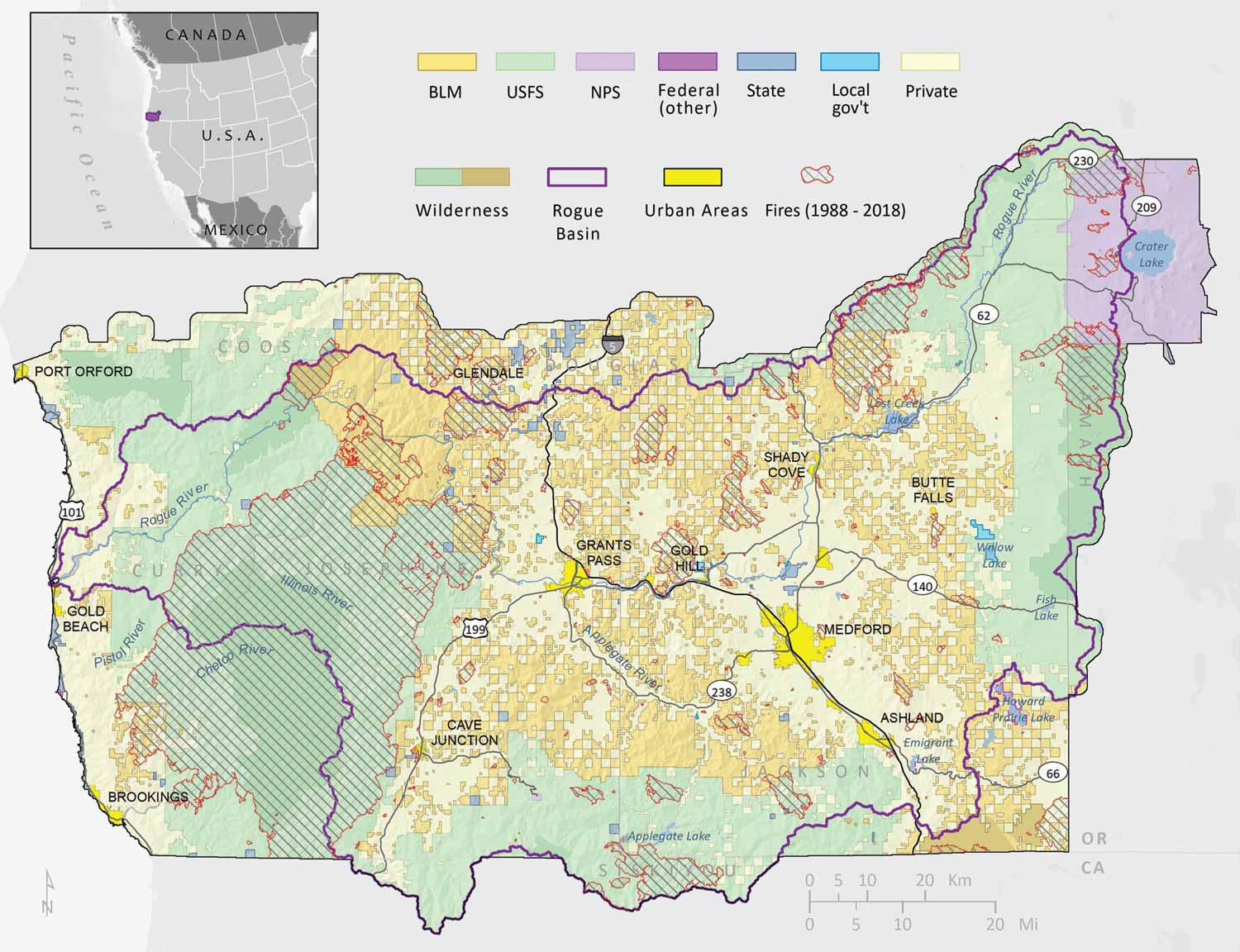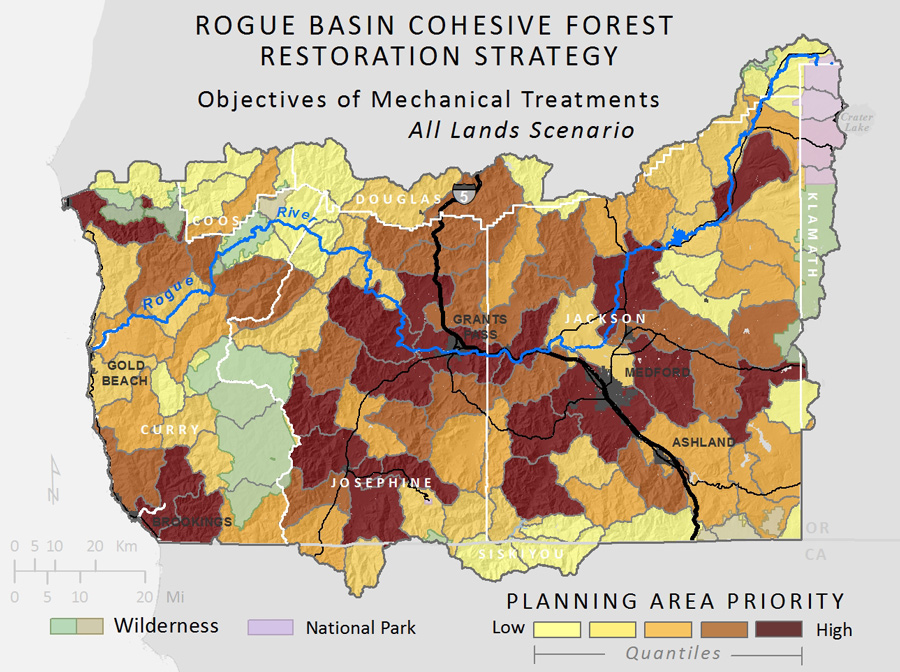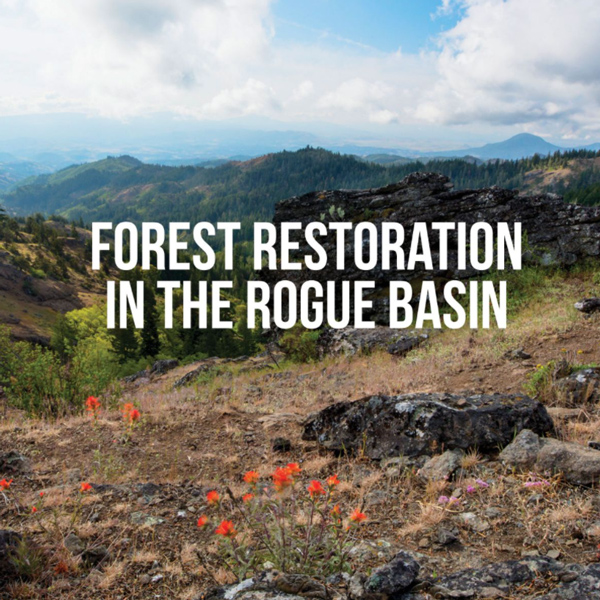Rogue Basin Strategy
The Rogue Basin Cohesive Forest Restoration Strategy analysis area covered 4.6 million-ac across many ownerships and land allocations.
Landscape-scale and strategically placed forest thinning, fuels reduction, and controlled burning is needed to restore resilience to wildfires and maintain forest health. Such treatments are vital for mitigating threats to forests and surrounding communities from uncharacteristically destructive fires catalyzed by a century of fire exclusion, past logging practices, and climate change.
A roadmap to better Southern Oregon forests.
To guide our work, SOFRC and partners developed the Rogue Basin Cohesive Forest Restoration Strategy (RBS, or “the Strategy”). This strategy is based on the understanding that the forests of the Rogue Basin in Southwest Oregon have innate social, economic, and ecological value – providing diverse wildlife habitat, underpinning the carbon and water cycles, and providing human communities with clean water, recreation, and other benefits and services.
The Rogue Basin Strategy protects complex forests, optimizes wildfire risk mitigation, promotes diverse and enduring habitats, and supports a predictable supply of ecosystem services. With full implementation, the Rogue Basin Strategy is expected to reduce overall wildfire risk by 70% and risk to homes by 50% relative to business as usual. Thinning on warm ridges and midslopes actually reduces wildfire risk to high-quality Northern Spotted Owl habitat by 47%.
Canadian Journal of Forest Research
Peer-reviewed Publication, Feb. 21, 2021
Rogue Basin Cohesive Forest Restoration Strategy
PDF download of our 2017 Report
The Rogue Basin Strategy provides data, tools, and approaches to integrate wildfire risk reduction with endangered species recovery and climate adaptation.
SOFRC focuses on the social, economic, and environmental aspects of restoration as key to this strategic plan. Tools such as stewardship agreements, service work, and timber sales are important economic activities for project implementation in this landscape with key management by the Rogue River – Siskiyou National Forest (RRSNF), and the Medford District of the Bureau of Land Management (MBLM).
Through the Rogue Basin Strategy, we identified forests to protect intact and pinpoints others where ecological thinning, fuels reduction, and controlled burning are appropriate. It helps increase the pace and scale of treatments that reduce the over-abundance of fuel.
The Strategy is a targeted approach that respects ecological values while restoring forest resilience. It reduces forest density and lowers wildfire risks to communities and old-growth habitats. And it benefits rural economies, as timber thinning creates jobs in the woods and revenue for local mills.
The Strategy at work
Pilot Joe
In 2010, SOFRC convened the 3-day Solutions for Forests conference at Southern Oregon University in Ashland Oregon that attracted over 200 people to discuss challenges to landscape-scale restoration and to seek ways to manage forests and still retain the habitat and ecological functions that forests provide. A field trip associated with the conference highlighted the Applegate as an area where dry forest with a historically frequent fire regime needed active management.
Following this field trip, the Middle Applegate Pilot Joe landscape-scale restoration project was designated by United States Secretary of Interior, Ken Salazar as a secretarial pilot project. Secretary Salazar called on Drs. Jerry F. Franklin and K. Norman Johnson noted forestry scientists and authors in the Pacific Northwest to work with local BLM Medford managers in the application of dry forest restoration principles that would protect habitat and reduce fire risk, while providing employment, maintaining mill infrastructure, and building public support for active restoration of federal forests
Want to get involved? Signup for our Newsletter:




